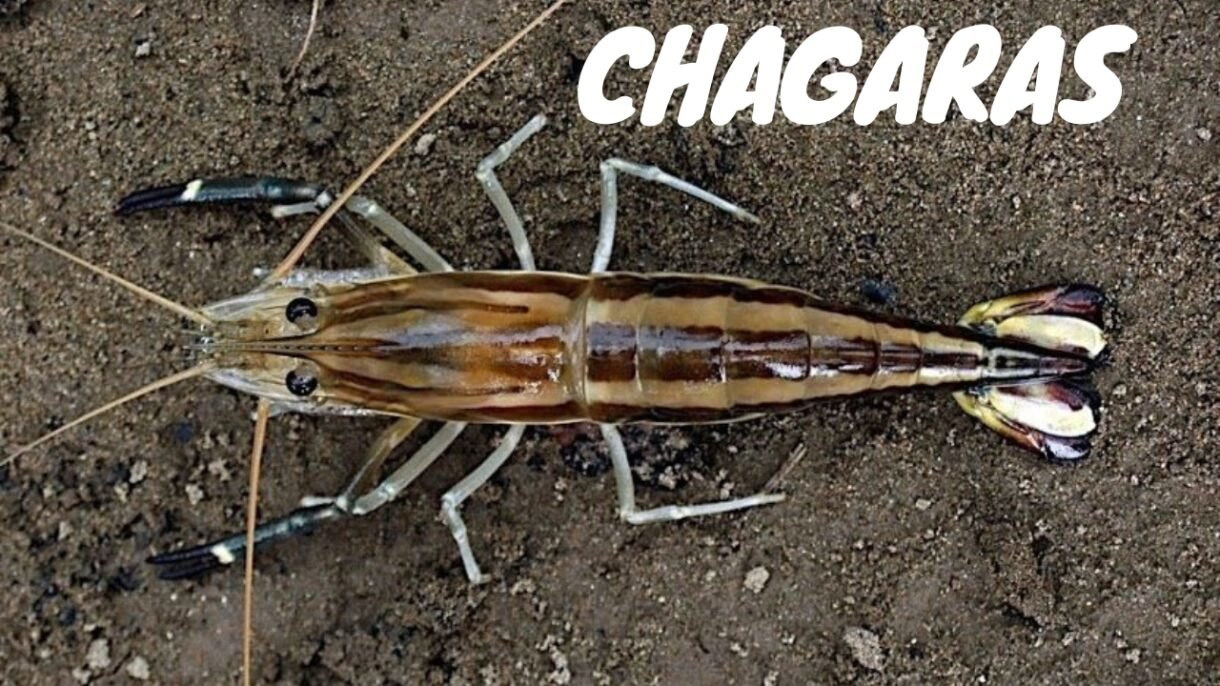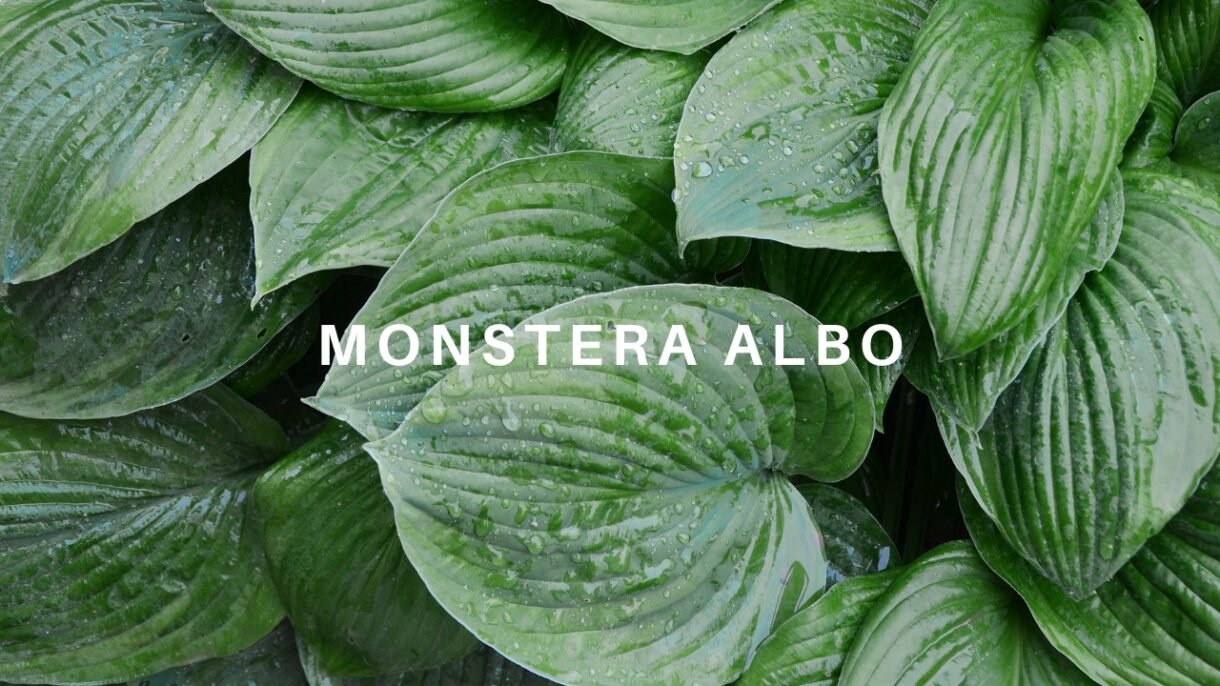Blog
Chagaras: Nature’s Camouflaged Wonders Revealed

In the enchanting realm of insects, one creature stands out for its uniqueness and ecological significance – the Chagaras, also known as palm grasshoppers. These fascinating insects have captured the attention of entomologists and nature enthusiasts alike due to their intriguing biology, behavior, and cultural importance. Let’s embark on a journey to uncover the mysteries and wonders of the Chagaras.
What are Chagaras?
- Definition: Chagaras are a species of grasshoppers belonging to the family Pyrgomorphidae, known for their distinct palm-like appearance and vibrant colors.
- Physical Characteristics: These remarkable insects exhibit a striking resemblance to palm leaves, with elongated bodies and wings that resemble palm fronds. Their coloration varies from bright green to brown, providing effective camouflage in their natural habitat.
- Habitat: Chagaras are primarily found in tropical regions, particularly in dense vegetation such as rainforests and savannas. They thrive in warm, humid environments abundant in vegetation, which serve as their primary food source and habitat.
Lifecycle of Chagaras
Understanding the lifecycle of Chagaras sheds light on their ecological role and evolutionary adaptations.
- Egg Stage: Chagaras begin their life cycle as eggs, which are typically laid in clusters on vegetation. The female Chagaras carefully selects a suitable location for egg deposition, ensuring the safety and accessibility of the offspring.
- Nymph Stage: Upon hatching, Chagaras emerge as nymphs, resembling miniature versions of adults but without fully developed wings. During this stage, they undergo several molts, shedding their exoskeletons as they grow in size.
- Adult Stage: As Chagaras reach maturity, they develop fully functional wings, enabling them to engage in flight and dispersal. Adult Chagaras play a crucial role in reproduction and population maintenance within their ecosystem.
Ecological Significance
Chagaras play a vital role in maintaining ecosystem balance and biodiversity through various ecological interactions.
- Herbivorous Diet: As herbivores, Chagaras primarily feed on vegetation, including leaves, grasses, and other plant materials. Their feeding behavior can influence plant growth patterns and nutrient cycling within their habitat.
- Prey for Predators: Chagaras serve as a significant food source for various predators, including birds, reptiles, and small mammals. Their abundance contributes to the dietary diversity of these predators, ultimately shaping food webs and trophic dynamics.
- Pollination: Although primarily herbivorous, Chagaras may inadvertently contribute to pollination while feeding on flowers and plant tissues. Their movements between plants facilitate pollen transfer, thereby aiding in plant reproduction and genetic diversity.
Cultural and Economic Importance
Beyond their ecological role, Chagaras hold cultural significance in certain societies and possess economic value in regional markets.
- Cultural Symbolism: In some cultures, Chagaras are revered as symbols of fertility, abundance, and resilience. Their presence may be associated with cultural rituals, myths, and folklore, reflecting the intrinsic connection between humans and nature.
- Culinary Delicacy: In certain regions, Chagaras are considered a delicacy and are consumed as a protein-rich food source. Traditional culinary practices may involve cooking Chagaras in various dishes, such as soups, stews, or fried snacks, highlighting their nutritional value and culinary versatility.
- Economic Trade: The harvesting and sale of Chagaras in local markets contribute to livelihoods and economic activities in rural communities. Their availability during certain seasons may drive demand among consumers seeking unique culinary experiences or traditional remedies.

Conservation Challenges and Efforts
Despite their ecological and cultural importance, Chagaras face various conservation challenges that threaten their survival.
- Habitat Loss: Deforestation, land conversion, and agricultural expansion pose significant threats to Chagaras habitats, leading to population declines and habitat fragmentation.
- Overharvesting: Unregulated harvesting and exploitation for culinary purposes can deplete Chagaras populations, jeopardizing their long-term sustainability and ecological function.
- Climate Change: The impacts of climate change, including altered weather patterns, temperature fluctuations, and habitat degradation, pose additional challenges to Chagaras survival and adaptation.
Conservation Initiatives:
- Habitat Restoration: Efforts to restore and conserve natural habitats through reforestation, habitat protection, and sustainable land management practices can benefit Chagaras populations and promote ecosystem resilience.
- Community Engagement: Engaging local communities in conservation initiatives through education, awareness campaigns, and sustainable livelihood opportunities can foster stewardship and promote coexistence with Chagaras and their habitats.
- Legislative Protection: Implementation of regulations, policies, and legal frameworks to regulate Chagaras harvesting, trade, and habitat protection can enhance their conservation status and ensure long-term viability.
Conclusion
In conclusion, Chagaras represent a remarkable example of nature’s diversity and beauty, offering valuable insights into ecological processes, cultural traditions, and conservation challenges. By recognizing their ecological significance and implementing proactive conservation measures, we can safeguard the future of Chagaras and their habitats for generations to come. Let us embrace the marvels of Chagaras and work together to preserve the rich tapestry of life on our planet.
FAQs
- What do Chagaras eat?
- Chagaras primarily feed on vegetation, including leaves, grasses, and other plant materials. Their herbivorous diet contributes to ecosystem dynamics and nutrient cycling within their habitat.
- Are Chagaras harmful to plants?
- While Chagaras consume plant materials as part of their diet, they typically do not pose significant harm to plant populations. However, in cases of large-scale infestations or population outbreaks, they may cause localized damage to crops or vegetation.
- Can you eat Chagaras?
- Yes, Chagaras are consumed as a delicacy in certain regions where they are considered a protein-rich food source. Traditional culinary practices involve cooking Chagaras in various dishes, such as soups, stews, or fried snacks.
- Do Chagaras have any predators?
- Yes, Chagaras serve as a significant food source for various predators, including birds, reptiles, and small mammals. Predators play a crucial role in regulating Chagaras populations and maintaining ecological balance within their habitat.
- Are Chagaras endangered?
- While Chagaras may face conservation challenges such as habitat loss, overharvesting, and climate change, they are not currently classified as endangered species. However, proactive conservation efforts are essential to ensure their long-term sustainability and ecological function.
Blog
Hidden Menace in Your Home? 10 Warning Signs of Mold Toxicity You Should Know

Imagine waking up each day feeling tired, with a constant headache, and persistent coughing. You might think it’s just a cold or stress from a busy lifestyle. But what if the culprit is lurking right within your home? Mold toxicity is a hidden danger that can lead to serious health issues. It occurs when you breathe in mold spores or come into contact with mold, which can grow in damp and poorly ventilated areas of your home. This blog post will explore what mold toxicity is, its warning signs, health impacts, detection methods, prevention tips, and when to seek professional help.
What Exactly is Mold Toxicity?
Mold toxicity stems from exposure to toxic mold, also known as mycotoxins. These molds release spores into the air, which can then be inhaled or come into contact with your skin. Mycotoxins are harmful chemicals produced by certain types of mold, and they can cause a variety of health problems ranging from mild allergic reactions to severe respiratory issues.
Mold can thrive in any damp environment, making basements, bathrooms, and kitchens common hotspots. Leaky roofs, windows, and pipes are typical causes of mold growth. Even high humidity levels in your home can promote mold development. Understanding the causes and staying vigilant can help you keep mold at bay.
Ten Warning Signs of Mold Toxicity
Persistent Sinus Issues
If you find yourself constantly battling sinus infections, it might be more than just seasonal allergies. Mold can irritate the nasal passages, leading to congestion, sneezing, and a runny nose. These symptoms may persist despite taking allergy medication, indicating that mold could be the underlying cause.
Chronic Fatigue
Waking up tired after a full night’s sleep is frustrating and can seriously impact your daily life. Mold exposure can lead to chronic fatigue by affecting your body’s ability to produce energy. You might feel lethargic and find it difficult to complete tasks that were once easy.
Frequent Headaches
Mold toxins can trigger headaches and migraines. If you notice that your headaches worsen when you’re at home and improve when you’re outside, mold might be the cause. Keeping a headache diary can help you spot patterns and identify potential triggers.
Respiratory Problems
Coughing, wheezing, and shortness of breath are common symptoms of mold toxicity. Mold spores can irritate the lungs and exacerbate conditions like asthma. If you or your family members experience unexplained respiratory issues, it’s worth investigating mold as a possible cause.
Skin Irritations
Rashes, itching, and hives can result from direct contact with mold. Mycotoxins can penetrate the skin, causing these uncomfortable symptoms. If you notice skin irritations that don’t respond to typical treatments, consider the possibility of mold exposure.
Eye Irritation
Red, itchy, and watery eyes can be a sign of mold toxicity. Mold spores can irritate the eyes, leading to discomfort and vision problems. If you experience these symptoms indoors but find relief outside, mold might be affecting your eye health.
Cognitive Issues
Memory loss, difficulty concentrating, and brain fog are alarming symptoms associated with mold toxicity. Exposure to mycotoxins can impact brain function, making it hard to focus on tasks or recall information. These cognitive issues can be especially concerning and should not be ignored.
Unexplained Muscle and Joint Pain
Mold toxicity can cause muscle cramps, joint pain, and stiffness. These symptoms can mimic conditions like arthritis, making it challenging to pinpoint mold as the cause. If traditional treatments don’t alleviate your pain, consider mold exposure as a potential factor.
Gastrointestinal Problems
Digestive issues such as nausea, vomiting, diarrhea, and stomach cramps can result from mold toxicity. Mold can affect your gut health, leading to a range of gastrointestinal problems. Tracking your symptoms and considering mold exposure can help you find relief.
Mood Swings and Anxiety
Mold exposure can impact your mental health, leading to mood swings, anxiety, and depression. Mycotoxins can affect neurotransmitter function, causing changes in your emotional well-being. If you notice unexplained changes in your mood, mold toxicity could be a contributing factor.
Health Impacts of Mold Toxicity
Respiratory Issues
Mold toxicity can significantly impact your respiratory system. Prolonged exposure to mold spores can cause chronic bronchitis, asthma, and other respiratory conditions. In severe cases, mold exposure can lead to life-threatening lung infections.
Allergic Reactions
Allergic reactions to mold can range from mild to severe. Symptoms include sneezing, runny nose, itchy eyes, and skin rashes. For individuals with mold allergies, exposure can trigger asthma attacks and other serious health problems.
Neurological Effects
Mold toxicity can affect the nervous system, leading to cognitive issues, headaches, and mood disorders. Research has shown that mycotoxins can cross the blood-brain barrier, causing inflammation and neurological damage.
Immune System Compromise
Chronic mold exposure can weaken the immune system, making it harder for your body to fight off infections. This can lead to frequent illnesses, slow recovery times, and increased susceptibility to other health issues.
Detecting Mold in Your Home
Visual Inspection
The first step in detecting mold is conducting a thorough visual inspection of your home. Look for signs of mold growth in damp areas such as basements, bathrooms, and kitchens. Pay close attention to areas with water damage or leaks.
Musty Odor
A musty odor is a telltale sign of mold growth. If you notice a persistent musty smell in your home, it’s likely that mold is present. Investigate the source of the odor to identify and address the mold problem.
Professional Testing
If you suspect mold but can’t find any visible signs, consider hiring a professional mold inspector. They can conduct air quality tests and surface sampling to detect hidden mold and identify the type of mold present.
Prevention and Remediation
Control Moisture Levels
To prevent mold growth, it’s crucial to control moisture levels in your home. Fix any leaks promptly, use dehumidifiers in damp areas, and ensure proper ventilation in bathrooms and kitchens.
Regular Cleaning
Regular cleaning can help prevent mold growth. Use mold-resistant cleaning products and keep your home dry and clean. Pay special attention to areas prone to moisture buildup, such as shower curtains and window sills.
Safe Mold Removal
If you find mold in your home, it’s essential to remove it safely. Wear protective gear, such as gloves and a mask, to avoid inhaling mold spores. Use a mixture of water and detergent to scrub away the mold, and dispose of any contaminated materials.
Importance of Professional Help
Severe Mold Infestations
For severe mold infestations, it’s best to seek professional help. Mold remediation specialists have the tools and expertise to safely and effectively remove mold from your home. Attempting to tackle a large mold problem on your own can be dangerous and ineffective.
Health Concerns
If you or your family members experience health issues related to mold exposure, consult a healthcare professional. They can provide guidance on managing symptoms and suggest ways to reduce further exposure to mold.
Long-Term Solutions
Professional mold remediation can provide long-term solutions to prevent future mold growth. Experts can identify and address the root cause of the mold problem, ensuring your home remains mold-free.
You May Also Like: Discover the Mighty Benefits of Wellhealthorganic Buffalo Milk
Conclusion
Mold toxicity is a serious issue that can have significant health impacts. By understanding the warning signs and taking steps to prevent and address mold growth, you can protect your home and your health. If you suspect mold toxicity, don’t hesitate to seek professional help to ensure a safe and healthy living environment.
FAQS
Q: Can mold cause long-term health issues?
A: Yes, prolonged exposure to mold can lead to chronic health problems such as respiratory issues, neurological effects, and weakened immune system.
Q: How can I prevent mold growth in my home?
A: To prevent mold growth, it’s essential to control moisture levels and regularly clean areas prone to dampness. If you find mold, remove it safely and address any underlying moisture issues.
Q: Can I tackle a large mold problem on my own?
A: It’s best to seek professional help for severe mold infestations. Mold remediation specialists have the tools and expertise to safely remove mold and address the root cause of the issue.
What are the most common areas for mold growth in a home?
Mold thrives in damp and poorly ventilated areas. Common locations for mold growth include basements, bathrooms, kitchens, and areas with water damage or leaks.
How can I prevent mold growth in my home?
To prevent mold growth, control moisture levels by fixing leaks, using dehumidifiers, and ensuring proper ventilation. Regular cleaning and using mold-resistant products can also help.
When should I seek professional help for mold issues?
Seek professional help for severe mold infestations, health concerns related to mold exposure, or when you can’t identify the source of mold. Professional mold remediation can provide long-term solutions to prevent future mold growth.
Can mold toxicity cause long-term health problems?
Yes, prolonged exposure to mold can lead to chronic respiratory issues, neurological effects, and weakened immune systems. It’s essential to address mold problems promptly to protect your health.
Are there any DIY methods for detecting mold in my home?
DIY methods for detecting mold include visual inspections and using mold test kits available at hardware stores. However, for accurate results, consider hiring a professional mold inspector.
Blog
Discover the World of Tamil Cinema on 1tamilmv.prof

Are you a fan of Tamil cinema looking for a treasure trove of movies? Or maybe you’re a movie enthusiast who loves to explore torrents for the latest releases and timeless classics? If so, then 1tamilmv.prof might just be your new favorite website. In this blog post, we’ll take you on a comprehensive tour of 1tamilmv.prof, highlighting its features, benefits, and everything you need to know to make the most of your movie-watching experience.
What is 1tamilmv.prof?
1tamilmv.prof is a popular torrent website that specializes in Tamil movies. It offers a vast collection of Tamil films, ranging from the newest blockbusters to old favorites. Whether you’re looking for high-definition (HD) prints or standard quality, you’ll find a variety of options to choose from. It’s a go-to platform for many Tamil cinema fans who want easy access to their favorite movies.
Why 1tamilmv.prof Stands Out
In the crowded world of torrent websites, 1tamilmv.prof stands out for several reasons. First and foremost is its extensive library of Tamil movies. The site is regularly updated with the latest releases, so you never have to miss out on new films. Additionally, it offers movies in multiple formats and resolutions, catering to different preferences and devices.
Another standout feature is the user-friendly interface. Even if you’re new to torrenting, navigating 1tamilmv.prof is a breeze. The site is well-organized, with categories and search functions that make finding your desired movie quick and easy.
How to Access 1tamilmv.prof
Accessing 1tamilmv.prof is straightforward, but there are a few steps you need to follow to ensure a smooth experience. First, you’ll need a reliable VPN service. Since torrent websites often face legal challenges, a VPN will help you access the site securely and anonymously.
Next, visit the 1tamilmv.prof website. You’ll find a clean homepage with various categories like Latest Movies, Popular Movies, and more. Use the search bar or browse through the categories to find the movie you want to download.
Navigating the Homepage
The homepage of 1tamilmv.prof is designed to be user-friendly. At the top, you’ll find a search bar where you can type in the name of the movie you’re looking for. Below that, there are various categories and sections, such as “Latest Movies,” “Popular Movies,” and “HD Movies.” Each section is populated with thumbnails of movies, making it easy to scroll through and find something that catches your eye.
Using the Search Function
The search function is one of the most useful features of 1tamilmv.prof. Simply type in the name of the movie you want, and the site will display a list of results. You can also use the search function to find movies by actors, directors, or genres. This makes it incredibly convenient to locate specific films, even if you only have partial information.
Downloading Movies
Once you’ve found the movie you want to download, click on its thumbnail to go to the movie’s page. Here, you’ll find detailed information about the film, including its release date, cast, and a brief synopsis. Scroll down, and you’ll see various download links. These links are usually labeled with the movie’s resolution and file size, so you can choose the version that best suits your needs.
Click on the download link, and a new page will open. This page will have the actual torrent file or magnet link that you need to download the movie. Open this link with your torrent client, and the download will begin.
Quality and Resolution Options
One of the key advantages of 1tamilmv.prof is the variety of quality and resolution options available. Whether you’re looking for a high-definition experience or a smaller file size for quicker downloads, you’ll find multiple options to choose from. Common resolutions include 720p, 1080p, and sometimes even 4K UHD.
Understanding Torrent Files and Magnet Links
When downloading movies from 1tamilmv.prof, you may come across terms like “torrent files” and “magnet links.” Torrent files are small files that contain metadata about the files you want to download. You’ll need a torrent client, like uTorrent or BitTorrent, to open these files and start the download process.
Magnet links, on the other hand, are direct links that can be opened with a torrent client. They eliminate the need to download a separate torrent file, making the process even more straightforward.
Legal Considerations
It’s important to note that while 1tamilmv.prof offers a convenient way to download Tamil movies, it operates in a legal gray area. Downloading copyrighted material without permission is illegal in many jurisdictions. To stay on the right side of the law, consider using legal streaming services whenever possible.
The Importance of Using a VPN
Given the legal risks associated with torrenting, using a VPN (Virtual Private Network) is highly recommended when accessing 1tamilmv.prof. A VPN hides your IP address and encrypts your internet connection, providing an extra layer of security and anonymity. This helps protect you from potential legal repercussions and keeps your online activities private.
Community and User Reviews
One of the standout features of 1tamilmv.prof is its active community. Users often leave reviews and comments on movie pages, providing valuable insights into the quality of the download and the movie itself. These reviews can help you decide whether a particular download is worth your time.
Alternatives to 1tamilmv.prof
While 1tamilmv.prof is a fantastic resource for Tamil movies, it’s always good to have alternatives. Websites like Tamilrockers, Isaimini, and Madrasrockers also offer extensive libraries of Tamil films. However, each site has its pros and cons, so it’s worth exploring multiple options to find the one that best suits your needs.
Staying Updated with the Latest Releases
One of the best ways to stay updated with the latest releases on 1tamilmv.prof is to follow their social media channels or join their mailing list. Many torrent sites have Telegram groups, Twitter accounts, or Facebook pages where they announce new uploads. This ensures you never miss out on the latest movies.
Troubleshooting Common Issues
Occasionally, you might encounter issues when using 1tamilmv.prof. Common problems include broken links, slow download speeds, or difficulty accessing the site. Here are some tips to troubleshoot these issues:
- Broken Links: If you find a broken link, try another download link or search for an alternative source. User comments can also provide updates on working links.
- Slow Download Speeds: Slow speeds can be due to various factors, including your internet connection or the number of seeders for a particular torrent. Try downloading at different times of the day or look for torrents with more seeders.
- Site Access Issues: If you’re having trouble accessing 1tamilmv.prof, check if the site is down or blocked in your region. Using a VPN can often resolve access issues.
The Future of Torrenting and 1tamilmv.prof
The world of torrenting is constantly evolving, with new technologies and legal challenges emerging all the time. Despite these challenges, platforms like 1tamilmv.prof continue to thrive, offering movie enthusiasts a convenient way to access their favorite films. As long as there is demand for easily accessible, high-quality content, torrent sites will likely remain a popular choice for many.
You May Also Like: RusticoTV: Your Smart Entertainment Solutionhttps://dailymagazinehub.com/rusticotv/
Conclusion
1tamilmv.prof offers a fantastic resource for Tamil cinema fans and movie enthusiasts alike. With its extensive library, user-friendly interface, and variety of quality options, it stands out as one of the best torrent sites for Tamil movies. However, it’s essential to use the site responsibly and consider the legal implications of torrenting.
For those looking to explore the world of Tamil cinema, 1tamilmv.prof provides an excellent starting point. Whether you’re a longtime fan or new to the genre, you’ll find something to enjoy. Just remember to use a VPN, stay safe, and happy watching!
If you’re interested in discovering more about torrenting or Tamil cinema, feel free to explore our other blog posts and resources. Thank you for reading, and we hope you enjoy your movie-watching experience!
FAQs
Is it safe to download movies from 1tamilmv.prof?
Downloading movies from 1tamilmv.prof involves certain risks, including exposure to malware and legal repercussions for downloading copyrighted content without permission. To minimize these risks, always use a VPN, have a reliable antivirus program, and ensure you are aware of the legalities in your jurisdiction.
. What should I do if my download from 1tamilmv.prof is slow?
If you experience slow download speeds, try these solutions:
- Check your internet connection.
- Download during off-peak hours.
- Choose torrents with more seeders.
- Ensure your torrent client is correctly configured.
How can I access 1tamilmv.prof if it’s blocked in my country?
If 1tamilmv.prof is blocked in your region, using a VPN can help you bypass these blocks by masking your IP address and encrypting your internet connection, thereby allowing you to access the site.
. What are the different quality options available on 1tamilmv.prof?
1tamilmv.prof offers various quality and resolution options for movie downloads, including 720p, 1080p, and sometimes even 4K UHD. This allows users to choose between high-definition experiences and smaller file sizes for quicker downloads.
Where can I find the latest movie releases on 1tamilmv.prof?
To stay updated with the latest movie releases on 1tamilmv.prof, follow their social media channels or join their mailing list. They often have Telegram groups, Twitter accounts, or Facebook pages where new uploads are announced.
Blog
The Enchanting World of Monstera Albo for Plant Enthusiasts

Imagine stepping into a room and being greeted by the sight of a stunning, variegated leaf that’s equally enchanting and mysterious—the Monstera Albo. For plant enthusiasts, the Monstera Albo isn’t just another houseplant; it’s a statement piece that captures attention and admiration. This blog post aims to introduce you to the captivating world of the Monstera Albo, exploring its history, unique features, care tips, propagation techniques, and more. Whether you’re new to plant parenthood or a seasoned green thumb, this guide will help you appreciate and care for this extraordinary plant.
The Monstera Albo’s Origins
A Glimpse Into History
The Monstera Albo, formally known as Monstera deliciosa ‘Albo Variegata,’ traces its roots back to the tropical rainforests of Central and South America. It’s a natural mutation of the more common Monstera deliciosa, prized for its striking white and green variegated leaves. Unlike its all-green cousin, the Monstera Albo has captivated plant enthusiasts worldwide with its unique appearance.
Natural Habitat
In the wild, the Monstera Albo thrives in humid, dense forests, climbing trees with its aerial roots. This environment provides it with ample shade and moisture, conditions that are crucial for its growth. Understanding its natural habitat can give you insights into how best to care for this plant in your home.
Cultural Significance
Throughout history, the Monstera species has been celebrated in various cultures. In Mexico, it’s known as “Monstera” due to its monstrous size and leaves. Its variegated version, the Monstera Albo, has become a symbol of luxury and elegance, often featured in high-end interior designs and social media feeds.
Unique Features of the Monstera Albo
Variegation and Leaf Patterns
One of the most striking features of the Monstera Albo is its variegated leaves, which display an array of white and green patterns. Each leaf is unique, with no two leaves looking exactly alike. This variegation is due to a genetic mutation that affects chlorophyll production, making each leaf a living piece of art.
Fenestrations
The Monstera Albo, like its green cousin, develops fenestrations—those iconic holes and splits in its leaves. These fenestrations are not just aesthetically pleasing; they serve a practical purpose in the plant’s natural habitat, allowing light to pass through to lower leaves and reducing wind resistance.
Growth Habit
The Monstera Albo is a climbing plant, using its aerial roots to anchor itself to trees or other structures. In a home setting, this means it will appreciate a moss pole or trellis to support its growth. Given the right conditions, it can become a large and impressive centerpiece in any room.
Care and Maintenance
Light Requirements
Monstera Albo thrives in bright, indirect light. Direct sunlight can scorch its delicate leaves, while low light can result in less vibrant variegation. Ideally, place your Monstera Albo near a north or east-facing window to ensure it gets the right amount of light.
Watering Tips
Watering your Monstera Albo requires a balanced approach. The soil should be kept consistently moist but not waterlogged. Overwatering can lead to root rot, while underwatering can cause the leaves to wilt and dry out. A good rule of thumb is to water when the top inch of soil feels dry to the touch.
Humidity and Temperature
Given its tropical origins, the Monstera Albo prefers high humidity levels. A room humidity of around 60% is ideal. If your indoor climate is on the drier side, consider using a humidifier or placing a tray of water near the plant. The plant also thrives in temperatures between 65-80°F (18-27°C).
Soil and Fertilization
A well-draining, peat-based potting mix is ideal for Monstera Albo. Adding perlite or orchid bark can improve drainage. During the growing season (spring and summer), feed your plant with a balanced, water-soluble fertilizer every four to six weeks to support its growth.
Propagation Techniques
Stem Cuttings
One of the most popular methods to propagate Monstera Albo is through stem cuttings. Here’s a step-by-step guide:
- Select a healthy stem with at least one node and one leaf.
- Cut the stem just below the node using a clean, sharp knife or scissors.
- Place the cutting in water or directly into a pot with well-draining soil.
- If using water, change it every few days to prevent stagnation. Roots should develop within a few weeks.
Air Layering
Air layering is another effective method, especially for larger plants. Here’s how to do it:
- Choose a healthy stem and make a small cut just below a node.
- Wrap the cut area with damp sphagnum moss and secure it with plastic wrap.
- Keep the moss moist until roots develop, then cut the stem below the new root growth and plant it in soil.
Division
If your Monstera Albo has grown large enough, you can divide the root ball to create new plants. This method is best done during repotting:
- Gently remove the plant from its pot and shake off excess soil.
- Carefully separate the root ball into smaller sections, ensuring each section has at least one stem and leaf.
- Plant each section in its own pot with fresh soil.
Common Issues and Troubleshooting
Pests
Monstera Albo can be susceptible to pests like spider mites, mealybugs, and aphids. Regularly inspect your plant for signs of infestation, such as webbing, white cottony spots, or sticky residue. Treat affected plants with insecticidal soap or neem oil.
Diseases
Root rot is a common issue caused by overwatering. Symptoms include yellowing leaves and a mushy stem. To prevent root rot, ensure your plant’s soil is well-draining and avoid letting it sit in water. If root rot occurs, trim away the affected roots and repot the plant in fresh soil.
Yellowing Leaves
Yellowing leaves can be a sign of several issues, including overwatering, underwatering, or nutrient deficiencies. Assess your plant’s watering routine and ensure it’s getting the right amount of light and nutrients. If the problem persists, consider testing the soil’s pH levels.
Monstera Albo in Home Décor
Statement Pieces
The Monstera Albo’s large, variegated leaves make it an eye-catching addition to any room. Use it as a statement piece in your living room or entryway, where its beauty can be fully appreciated.
Complementary Plants
Pair your Monstera Albo with other tropical plants like philodendrons or pothos to create a lush, jungle-like atmosphere. Their similar care requirements make them excellent companions.
Creative Displays
Get creative with how you display your Monstera Albo. Consider using decorative pots, plant stands, or hanging baskets. You can also train it to climb a trellis or moss pole for a dramatic, vertical effect.
You May Also Like: Discover Wellhealthorganic Home Remedies Tag for Better Health
Conclusion
The Monstera Albo is more than just a plant; it’s a living piece of art that brings a touch of the tropics into your home. With its unique variegation, impressive fenestrations, and manageable care requirements, it’s no wonder this plant has captured the hearts of plant enthusiasts worldwide. By following the tips and techniques outlined in this guide, you’ll be well on your way to growing and maintaining a healthy, thriving Monstera Albo.
If you’re eager to learn more or need personalized advice, consider booking a consultation with one of our expert plant stylists. We’re here to help you every step of the way on your plant parenthood journey. Thank you for being a part of our vibrant community of plant lovers!
Frequently Asked Questions
How Often Should I Water My Monstera Albo?
Water your Monstera Albo when the top inch of soil feels dry to the touch. This usually means watering once a week, but it can vary depending on your home’s humidity and temperature.
Can I Grow Monstera Albo Outdoors?
Monstera Albo can be grown outdoors in USDA hardiness zones 10-12. In cooler climates, it’s best to keep it indoors or bring it inside during the colder months.
How Can I Increase Humidity for My Monstera Albo?
Increase humidity by using a humidifier, placing a tray of water near the plant, or misting its leaves regularly. Grouping plants together can also help create a more humid microenvironment.
Why Are the Leaves on My Monstera Albo Turning Brown?
Brown leaves can indicate several issues, including low humidity, over-fertilization, or direct sunlight exposure. Adjusting your care routine should help resolve the problem.
Is Monstera Albo Toxic to Pets?
Yes, Monstera Albo is toxic to cats and dogs if ingested. Keep it out of reach of pets or consider choosing pet-safe plants for your home.
-

 Business and Finance5 months ago
Business and Finance5 months agoThe 5 Ways to Boost Your Cash Flow Forecasting Instantly
-

 Blog7 months ago
Blog7 months agoHow It Works Magazine: A Comprehensive Guide
-

 Sports4 months ago
Sports4 months agoThe Best Games on Unblocked Games 67
-

 Food4 months ago
Food4 months agoExploring the Flavorful World of Cassasse: A Culinary Journey
-

 Blog4 months ago
Blog4 months agoExploring the Wonders of Geek Culture with Geekzilla Podcast
-

 Entertainment4 months ago
Entertainment4 months agoExploring The Grand Duke Is Mine Spoilers: A Comprehensive Guide
-

 Business and Finance7 months ago
Business and Finance7 months agoThe Seven Ps of a Highly Successful CFO
-

 News4 months ago
News4 months agoDiscovering Alien Gear Holsters: Your Ultimate Destination for Quality Shooting Gear

























